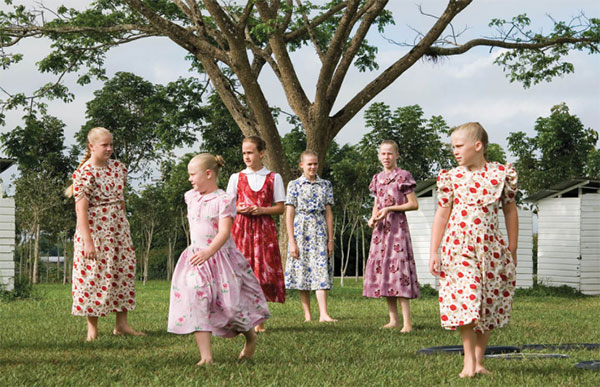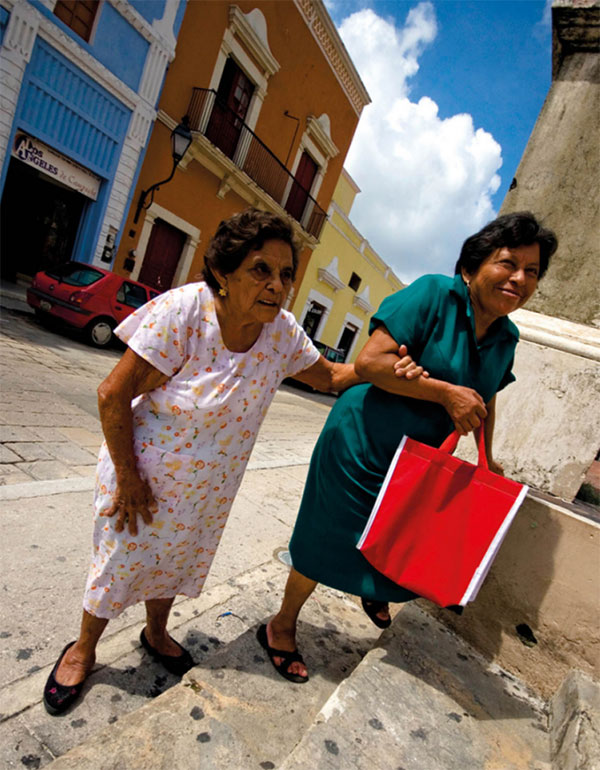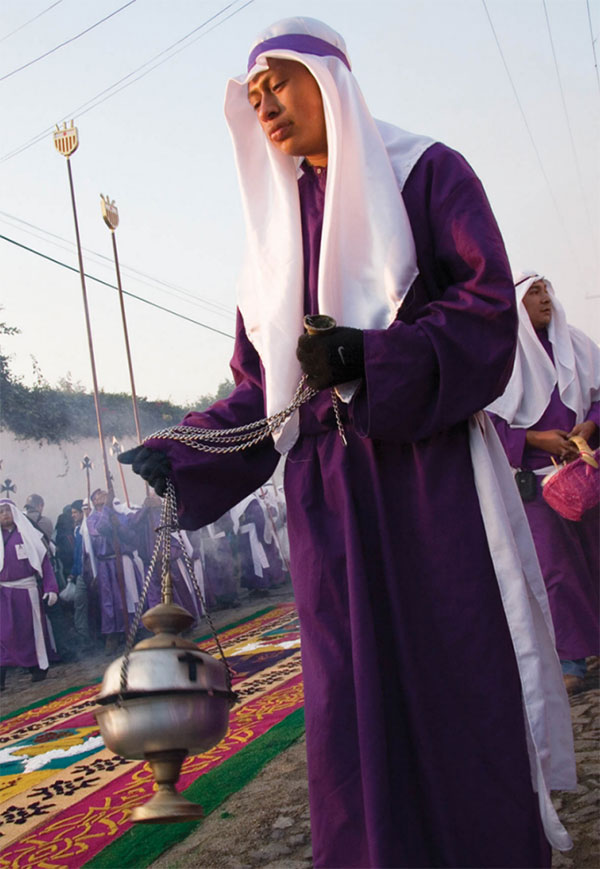Racial hierarchy
In many places in Central America the melting pot has been so thoroughly blended that locals are unexpectedly homogeneous. Wealth tends to be concentrated in the hands of the lighter skin, more European-looking residents, alongside those of newcomers from North America and Europe that are quickly establishing themselves among the elite. In many Central American countries, skin color and racial origins have a distinct bearing on status. The fairest people are frequently concentrated in the professional establishments or in front of television cameras. One can often detect a striking difference between the faces that appear on the television screen and those watching it, with the few dark or black on-screen faces relegated to servile roles. But this situation is now changing and has even been spoofed in more recent television dramas and comedies.

Mennonite children playing, Spanish Lookout, Belize.
Corrie Wingate/Apa Publications
Belize is home to the Mennonite community (for more information, click here), a religious sect who are descended from members of the Anabaptist Movement in Europe. Conservative Mennonites farm the land and live a lifestyle akin to the Amish in the US.
Many indigenous people, while clinging to their customs and traditions in the face of overwhelming odds, have historically been marginalized by other segments of society. The conquistadors and the church pushed indigenous cultures to convert to Catholicism and give up their traditional dress and customs, resulting in a hybrid system of beliefs and practises in many communities. While in past decades the ways of indigenous groups have been looked down upon, recent years have seen an appreciation of their culture by wider Central American society, such as Panamanian chefs working with the Ngäbe to develop their native ingredients, or the art community recognizing the value in Lenca pottery and Emberá tribal masks.
Growing pains
Much of Central America continues to be some of the most unequal part of the world. The lingering effects of civil wars and corruption have caused an uneven development of society. While the middle and upper classes, which tend to be concentrated in a few neighborhoods in the largest urban areas, have access to the same education and consumer goods as their Western counterparts, many others have been left behind. Modernization begs the question of what kind of society and political model these countries should aspire to.
More often than not, aspirations have transformed into aggressive consumerism. Consumer debt is on the rise even as wages remain low amid poor productivity. Social cohesion and respect for the environment remain rare as many of the wealthy lock themselves into gated communities and new immigrants from the countryside fight for turf in the poor barrios barely reached by government services.
Other challenges include widespread corruption and the spread of violent crime. As the international prohibition of drugs continues, maintaining the value of black-market smuggling as a lucrative practice, drug cartels have increased their presence in the countries south of Mexico and the resulting violence is an ongoing problem to which these societies have yet to find a solution.
WOMEN IN CENTRAL AMERICA
Despite significant gains, women throughout Central America are still held back by unequal pay, violence, and antiquated attitudes.
Central American women have been playing an ever more prominent role in political and professional life. In 1990, Nicaragua elected its first woman president, Violeta Chamorro, who would hold office until 1997. She was followed by Panama’s first female president, Mireya Moscoso, in 2009, and Laura Chinchilla in Costa Rica a year later. As doctors, lawyers, and in civil society pressure groups, women are to the fore. Young women are often the best and most enthusiastic students in many academic disciplines, while Latin America and the Caribbean has seen the largest gains in female labor force participation in the world during the last two decades, with women becoming increasingly active in paid work, closing the gap with men, and catching up to their counterparts in more advanced economies.
Yet in this mainly Catholic region, there is still a general assumption that a woman’s purpose should above all be to be a good wife and mother, and they are often expected to combine motherhood with a full day’s work, although they are rarely paid as much as their menfolk. On the streets, catcalling and overt harassment of women is common. The word machismo was, after all, coined to describe the Latin male. Women’s rights are not always guaranteed and there is ongoing criminalization of abortion in all Central American countries, with El Salvador and Nicaragua not permitting it under any circumstances; the former has perhaps the most draconian laws in the world, which can criminalize mothers for miscarriages or complex premature births under charges for ‘aggravated murder.’
Earning power
Poor working conditions and low wages can prevent many women and their families from climbing up from the lowest rungs of the economic ladder. Social protection programs in the region concentrate on social assistance and less on promoting life skills and job training, which limits a woman’s ability to attain the necessary tools and qualifications to enter the labor force on more favorable terms. While many Central American countries have enacted laws to protect and encourage gender equality, other challenges such as endemic violence and the outbreaks of infectious diseases often take priority over gender issues. Still, across Central America, women are increasingly playing a crucial role in maintaining social stability and meeting the basic needs of their families.

Women going to church in Campeche, Mexico.
Alex Havret/Apa Publications
The challenge of violence
Soberingly, rates of violence toward women are especially high in the countries with substantial gang problems. El Salvador has the highest female homicide rate (13.8 per 100,000) in the world, while Guatemala is rated eighth and Honduras seventh on this grim list. With many women fleeing violence in these countries, the issue is rapidly becoming a major refugee crisis. More than eight out of 10 women from the region who reach the US come from areas controlled by criminal armed groups, called maras, or drug cartels, where rapes, kidnappings, and various threats have become common. The increasing reach of such groups has surpassed the capacity of governments in the region to respond.

Procession during Semana Santa (Holy Week), Antigua, Guatemala.
Corrie Wingate/Apa Publications